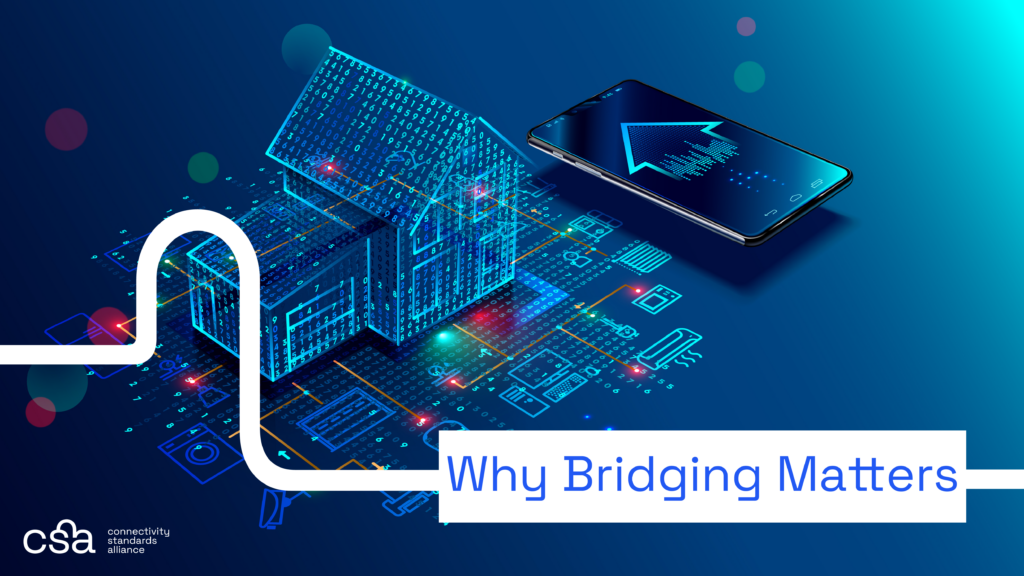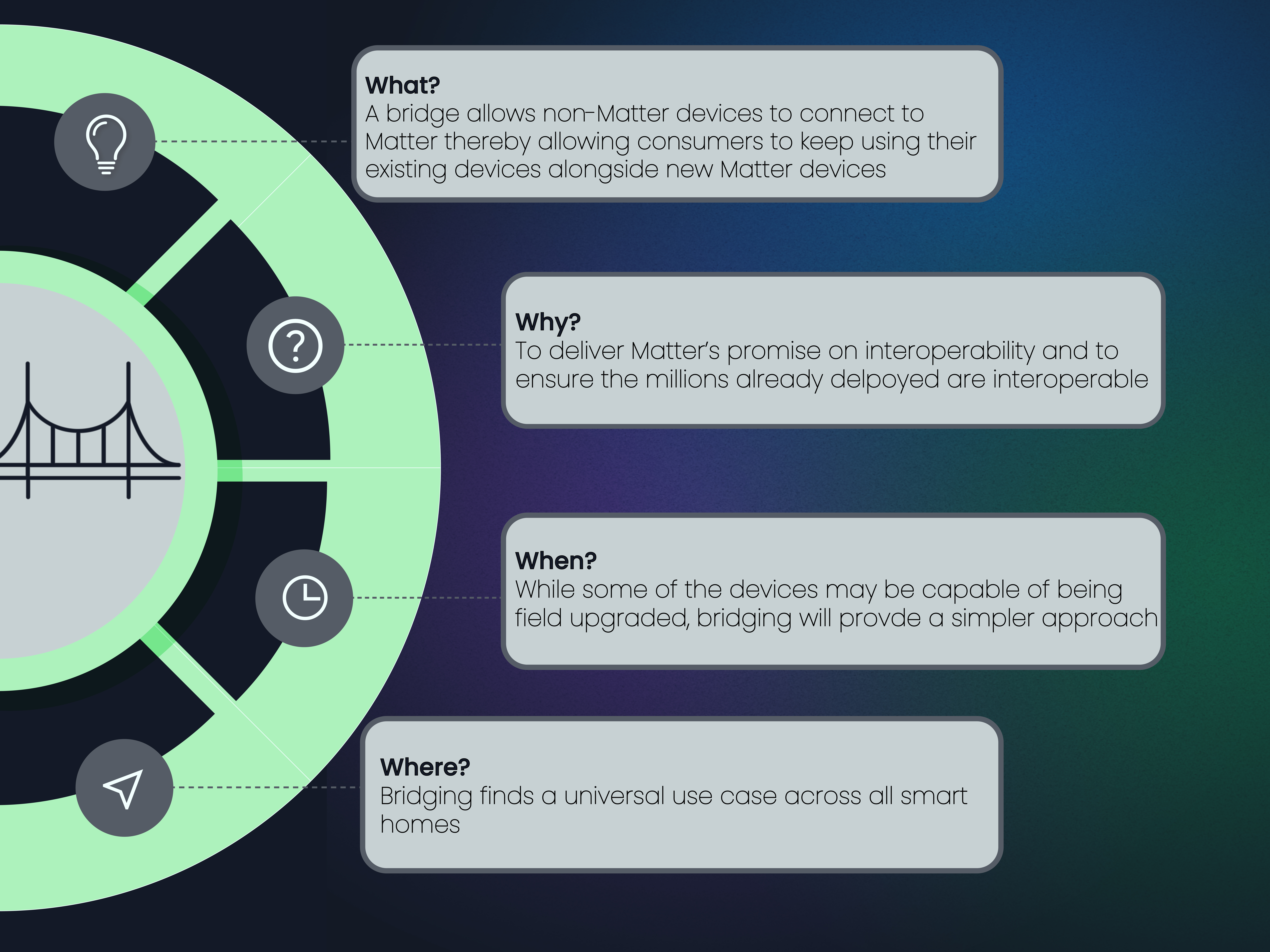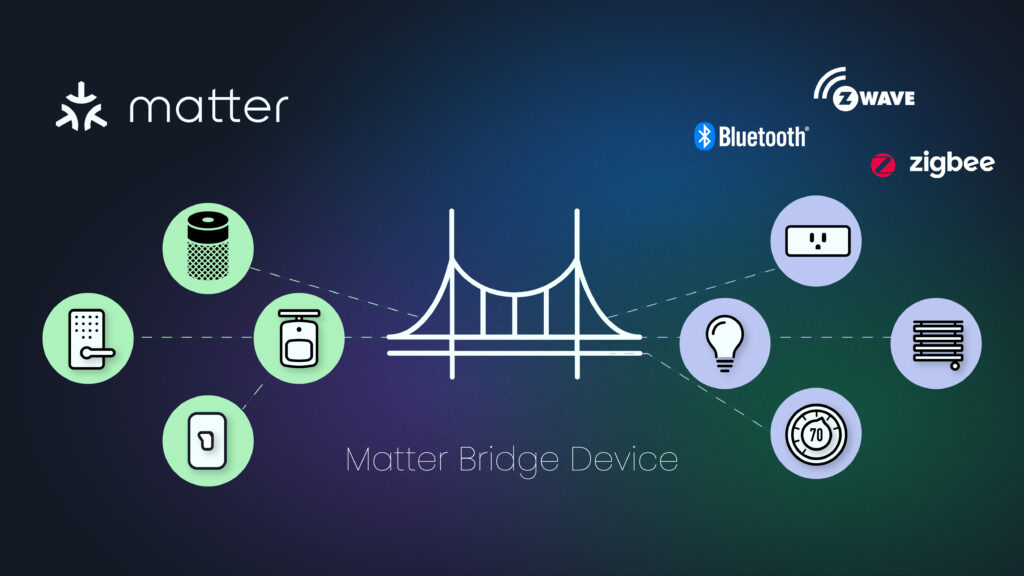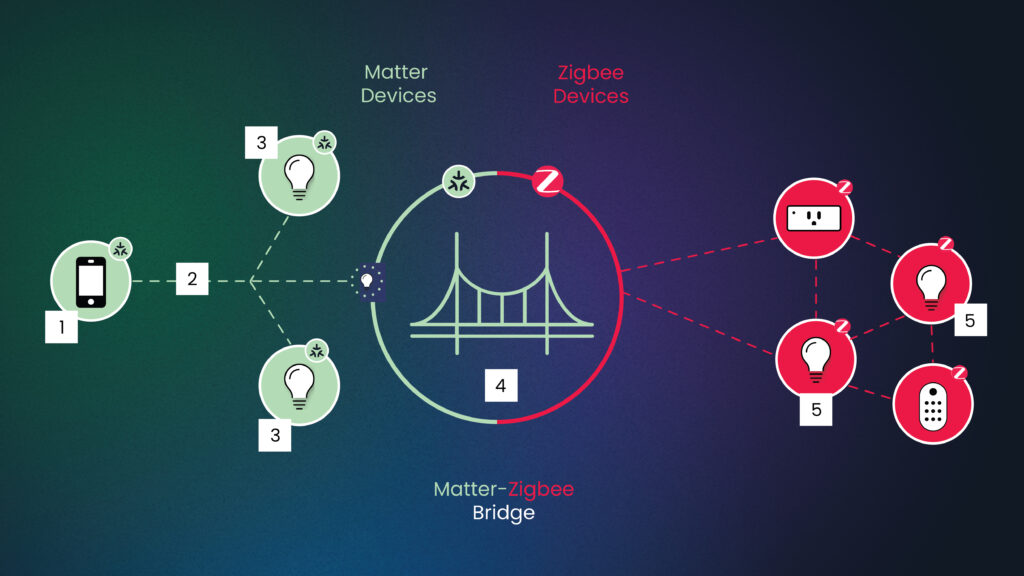
What bridging means in the world of Matter
Matter is an industry-unifying standard that aims to deliver reliable, secure connectivity that enables devices to work seamlessly across multiple smart home platforms – today and tomorrow. A key goal of Matter is the ability to easily add smart devices in consumers’ homes without having to decipher which platform the product is compatible with.
With the advent of Matter into the smart home space, a common question is, “Can my existing devices that use other technologies work with Matter devices?” The challenge is that in order to work together, smart home devices need to speak the same language; however, there are multiple existing languages in the smart home. While Matter natively supports Wi-Fi, Ethernet, and Thread, its goal is to simplify smart homes, including those that already have devices using other networking technologies, such as Zigbee or Z-Wave. To enable this, Matter bridges allow devices using other protocols (i.e., other languages) to work alongside Matter devices by translating between them. Bridges can be built into a variety of hardware devices like hubs, TVs, routers, or smart speakers, providing a seamless user experience across existing non-Matter and Matter devices.

Concept of the bridge

How a Matter bridge works
A Matter bridge portrays non-Matter devices as virtual Matter devices to the Matter side of the bridge. By doing this, non-Matter devices can communicate as part of the Matter network. For example, a Matter-only app or controller would see both the native Matter lights and the bridged Zigbee lights as Matter devices and be able to control them all in the same way.
Let’s walk through a real-life example. Consider a home with a mix of Matter and Zigbee lights connected through a bridge. A user with a Matter app or controller could group all of these lights as “living room lights.”
- The user controls their living room lights from a Matter Controller: e.g., a Matter-enabled smart speaker, smart display, mobile app, or switch.
- That controller sends a command over the Matter network to turn on the living room lights.
- The Matter-enabled living room lights turn on.
- Simultaneously, the bridge receives this command and translates it into a Zigbee command for the Zigbee lights connected to the bridge, allowing the Zigbee-enabled living room lights to also turn on.
- To the user, all their lights, regardless of protocol, responded together.

This can also work the other way around, allowing non-Matter controlling devices like buttons, switches, and sensors to control Matter devices via that bridge. In this instance, a user has automation set up in a smart home platform to turn the entryway lights on when the front door is opened:
- A user unlocks their front door, activating a Zigbee door lock connected to a bridge.
- The bridge translates that message and sends a “door unlocked” status indication from the door lock over the Matter network.
- The smart home platform responds to this signal by activating the automation and turning on the entryway lights.
- The smart lights turn on.

Conclusion
Bridging provides the translation between Matter and non-Matter devices in the smart home. Thus, it allows the user to control all of their smart home devices in a comprehensive way. Several device manufacturers plan to enable bridge functionality through software updates to their existing hubs. Bridging delivers a crucial part of Matter’s promise of industry-wide interoperability.
Learn more about Matter, the transformative industry–unifying standard.
